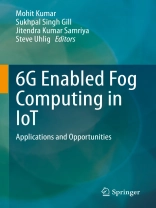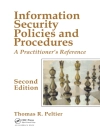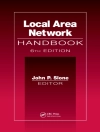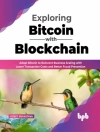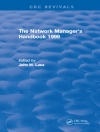Over the past few years, the demand for data traffic has experienced explosive growth thanks to the increasing need to stay online. New applications of communications, such as wearable devices, autonomous systems, drones, and the Internet of Things (Io T), continue to emerge and generate even more data traffic with vastly different performance requirements. With the COVID-19 pandemic, the need to stay online has become even more crucial, as most of the fields, would they be industrial, educational, economic, or service-oriented, had to go online as best as they can. As the data traffic is expected to continuously strain the capacity of future communication networks, these networks need to evolve consistently in order to keep up with the growth of data traffic. Thus, more intelligent processing, operation, and optimization will be needed for tomorrow’s communication networks. The Sixth Generation (6G) technology is latest approach for mobile systems or edge devices in terms of reduce traffic congestions, energy consumption blending with Io T devices applications. The 6G network works beyond the 5G (B5G), where we can use various platforms as an application e.g. fog computing enabled Io T networks, Intelligent techniques for SDN network, 6G enabled healthcare industry, energy aware location management. Still this technology must resolve few challenges like security, Io T enabled trust network.
This book will focus on the use of AI/ML-based techniques to solve issues related to 6G enabled networks, their layers, as well as their applications. It will be a collection of original contributions regarding state-of-the-art AI/ML-based solutions for signal detection, channel modeling, resource optimization, routing protocol design, transport layer optimization, user/application behavior prediction 6G enabled software-defined networking, congestion control, communication network optimization, security, and anomaly detection. The proposed editedbook emphasis on the 6G network blended with Fog-Io T networks to introduce its applications and future perspectives that helps the researcher to apply this technique in their domain and it may also helpful to resolve the challenges and future opportunities with 6G networks.
Tabella dei contenuti
Section 1: Applications.- Chapter 1: AI Enabled resources scheduling in Cloud Paradigm.- Chapter 2: Role of AI for Data Security and Privacy in 5G Healthcare Informatics.- Chapter 3: GPU based AI for Modern E-Commerce Applications: Performance Evaluation, Analysis and Future Directions.- Chapter 4: Air Quality Index Prediction Using Various Machine Learning Algorithms.- Chapter 5: Leveraging Cloud Native Microservices Architecture for High Performance Real-Time Intra-day Trading: A Tutorial.- Chapter 6: Hyp Edge: Intelligent Sensing of Diabetes Mellitus in Healthcare 4.0 on the Cloud.- Section 2: Architecture, Systems and Services .- Chapter 7: Efficient Resource Allocation in Virtualized Cloud Platforms using Encapsulated Virtualization based Ant Colony Optimization (EVACO).- Chapter 8: Authenticated, Secured, Intelligent and Assisted Medicine Dispensing Machine for Elderly Visual Impaired People.- Chapter 9: Prediction of Liver Disease Using Soft Computing and Data Science Approaches.- Chapter 10: Artificial Intelligence based Transfer Learning approach in Identifying and Detecting Covid-19 Virus from CT-Scan Images.- Chapter 11: Blockchain-based Medical Report Management and Distribution System.- Chapter 12: Design of 3-D Pipe Routing for Internet of Things Networks Using Genetic Algorithm.- Section 3: Further Reading .- Chapter 13: Intelligent Fog-Io T Networks with 6G Endorsement: Foundations, Applications, Trends and Challenges.- Chapter 14: The role of machine learning in the advancement of 6G technology: opportunities and challenges.- Chapter 15: A Comprehensive Survey on Network Resource management in SDN Enabled Data Center Network.- Chapter 16: Artificial Intelligence Advancement For 6G Communication: A Visionary Approach.- Chapter 17: AI meets SDN: A survey of Artificial Intelligent techniques applied to Software-Defined Networks.
Circa l’autore
Mohit Kumar is Assistant Professor in the Department of Information Technology at Dr. B R Ambedkar National Institute of Technology, Jalandhar, India. He received his Ph.D. degree from Indian Institute of Technology Roorkee in the field of Cloud Computing, 2018, and M.Tech degree in Computer Science and Engineering from ABV-Indian Institute of Information Technology Gwalior, India in 2013. He has received his B.Tech degree in Computer Science and Engineering from MJP Rohilkhand University Bareilly, 2009. His research topics cover the areas of Cloud computing, Fog computing, Edge Computing, Internet of Things, Soft Computing. He has published more than 20 research articles in reputed journals and international conferences. He has been Session chair and keynotes Speaker of many International conferences, webinars, FDP, STC in India. He has guided two M.Tech Thesis and guided 1 Ph.D. Scholar. He is an active reviewer of several reputed journals and international conferences. He is a member of the IEEE.
Sukhpal Singh Gill is a Lecturer (Assistant Professor) in Cloud Computing at the School of Electronic Engineering and Computer Science, Queen Mary University of London, UK. Prior to his present stint, Dr. Gill has held positions as a Research Associate at the School of Computing and Communications, Lancaster University, UK and also as a Postdoctoral Research Fellow at CLOUDS Laboratory, The University of Melbourne, Australia. Dr. Gill is serving as an Associate Editor in Wiley ETT and IET Networks Journal. He has co-authored 70+ peer-reviewed papers (with H-index 30+) and has published in prominent international journals and conferences such as IEEE TCC, IEEE TSC, IEEE TII, IEEE TNSM, IEEE Io T Journal, Elsevier JSS/FGCS, IEEE/ACM UCC and IEEE CCGRID. He has received several awards, including the Distinguished Reviewer Award from SPE (Wiley), 2018, Best Paper Award Aus PDC at ACSW 2021 and has also served as the PC member for venuessuch as Per Com, UCC, CCGRID, CLOUDS, ICFEC, Aus PDC. His research interests include Cloud Computing, Fog Computing, Software Engineering, Internet of Things and Energy Efficiency.
Jitendra Kumar Samriya is working as a Faculty in the Department of Information Technology, Dr. B.R. Ambedkar National Institute of Technology, Jalandhar. He has completed his Master of Technology and Ph.D. from BBA University (A Central University), Lucknow. His research interest is Cloud computing, Artificial Intelligence and Multi-objective Evolutionary optimization Techniques. He has published 15 research articles in reputed Journals, Conferences and Published five Indian and International patents. He is also a member of IEEE, SCRS.
Steve Uhlig obtained a Ph.D. degree in Applied Sciences from the University of Louvain, Belgium, in 2004. From 2004 to 2006, he was a Postdoctoral Fellow of the Belgian National Fund for Scientific Research (F.N.R.S.). His thesis won the annual IBM Belgium/F.N.R.S. Computer Science Prize 2005. Between 2004 and 2006, he was a visiting scientist at Intel Research Cambridge, UK, and at the Applied Mathematics Department of University of Adelaide, Australia. Between 2006 and 2008, he was with Delft University of Technology, the Netherlands. Prior to joining Queen Mary University of London, he was a Senior Research Scientist with Technische Universität Berlin/Deutsche Telekom Laboratories, Berlin, Germany. Since January 2012, he has been the Professor of Networks and Head of the Networks Research group at Queen Mary, University of London. Between 2012 and 2016, he was a guest professor at the Institute of Computing Technology, Chinese Academy of Sciences, Beijing, China. With expertise in network monitoring, large-scale network measurements and analysis, and network engineering, during his career he has been published in over 100 peer-reviewed journals, and awarded over £3million in grant funding. He is currently the Editor in Chief of ACM SIGCOMM Computer Communication Review, the newsletter of the ACM SIGCOMM SIG on data communications. Since December 2020, Steve has also held the position of Head of School of Electronic Engineering and Computer Science. Current Research interests: Internet measurements, software-defined networking, content delivery.
